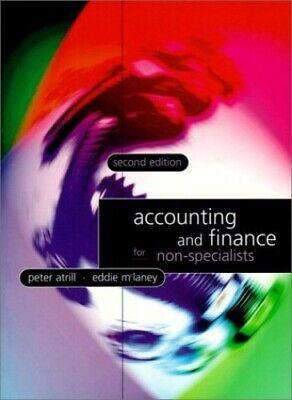Refer to Forge Group Ltds. financial reports for June 30, 2013 and answer the following questions: State the accounting equation at the beginning and end of the year and the changes between the beginning and the end of the year. State the changes in the companys equity during 2013. What is the main asset the company owns, and what is its value? Compare this to the total equity. Outline the largest expenses on the income statement. Compare them to the cash, debtors, creditors, and inventory balances. State the total revenue and net profit attributable to members of FGL and EBIT. Examine the Reconciliation of Cash Flows from Operations with the net profit after tax (NPAT). Outline the three major reconciliation items, and state how they changed. Outline the changes that have occurred in the companys financing activities. For the years ending June 30, 2013 and June 30, 2012, compute the Return on Assets, Profit Margin, and Current Ratios.



Table 2. Comprehensive Income Statement (in thousands of Australian dollars) Unaudited January 31, 2014 June 30, 2010 June 30, 2011 June 30, 2012 June 30, 2013 Revenue $246,169 $421,595 $774,879 $1,054,100 $520,041 (711,430) 9,696 (125,171) (79,194) (3,218) 15,000 (211,000) (157,191) (5,159) (516,867) (164,502) (16,292) (582) (656,334) (256,515) (21,361) (5,380) (1,628) (7,132) 537 (304) (8,043) (21,033) Cost of sales Changes in inventories of finished goods and WIP Materials, plant, and contractor costs Employee benefits expense Depreciation and amortization Consulting fees Provision for impairment losses Other expenses Other gains and losses Expenses Results from Operating Activities Finance income Finance costs Net finance income Share of profit/(loss) of associates and jointly controlled entities Net Profit Before Tax (12,711) 257 188 $54,898 3,079 $93,665 6,939 $40,059 1,023 (716) $307 $64,182 5,698 (2,850) $2,848 3,052 $70,082 (20,780) $49,302 (310) $48,992 (711) $2,368 (513) $56,753 (17,920) $38,833 (1,946) $36,887 (4,816) $2,123 (5,679) $90,109 (27,190) $62,919 1,826 $64,745 $40,366 (10,915) $29,451 (346) $29,105 Income tax expense $(324,162) (2,301) $(326,463) Net Profit After Tax Foreign exchange differences (net of tax) Total Comprehensive Income Table 3. Balance Sheet (in thousands of Australian dollars) June 30, 2010 Unaudited January 31, 2014 June 30, 2011 June 30, 2012 June 30, 2013 $51,921 $78,285 $51,091 $15,316 $90,728 2,748 Current Assets Cash and cash equivalents Short-term deposits Trade and other receivables Inventories and WIP Current tax assets Other assets Noncurrent assets classified as held for sale Total Current Assets 83,254 42,162 14,621 72,500 196,884 11,331 49,542 29,622 103,279 40,616 150,491 2,535 1,560 2,246 1,574 2,487 (23,415) 6,900 $117,850 $159,023 $334,293 $331,316 $135,796 7,051 1,424 73,293 14,260 10,468 36,577 67,736 Noncurrent Assets Trade and other receivables Term deposits Property, plant, and equipment Deferred tax assets Investments accounted for using equity method Intangibles Other assets Total Noncurrent Assets 26,789 1,827 71,546 9,124 2,043 4,273 2,545 15,621 15,637 48,243 40,332 90,467 44,237 132,894 54,257 $213,280 144,108 $478,401 163,760 $299,556 Total Assets $162,087 $464,210 52,968 72,845 299,909 Current Liabilities Trade and other payables Borrowings Current tax liabilities Provisions Other liabilities Total Current Liabilities 219,568 11,139 2,789 8,644 525 267,169 8,734 8,367 3,272 6,387 755 825 3,970 63,731 $363,640 $64,926 $83.259 $285,095 $234,677 9,246 1,517 4,901 17,453 14,547 51 2,793 1,067 Noncurrent Liabilities Trade and other payables Borrowings Deferred tax liabilities Investments accounted for using the equity method Provisions Other liabilities Total Noncurrent Liabilities 489 493 308 299 164 489 493 50,667 $3,785 $5,559 $29,981 $16,107 $52,184 88,818 315,076 250,784 68,711 93.376 415,824 (116,268) 124,426 163,325 213,426 42,839 44,294 45,430 42,768 Total Liabilities Net Assets Equity Issued capital Profit reserve Reserves Retained earnings Total Equity Number of shares 45,430 62,919 1,034 (159,036) (912) 81,080 124,462 (1,221) 119,116 49,505 1,471 103,606 213,426 86,169,014 163,325 93,376 70,699,487 (116,268) 86,169,014 81,541,569 86,169,014 Share price $2.66 $5.46 $4.37 $4.20 Table 4. Statement of Cash Flows (in thousands of Australian dollars) 2010 2011 2012 2013 245,418 (215,240) 943 431,399 (373,464) 744,720 (631,924) 1,176,226 (1,113,073) 638 (20,390) (670) $30,451 (21,537) $91,259 (45,231) $17,922 $38.183 (8,371) 224 (11,257) 6,485 (39,737) 500 5,649 (86,760) 1,023 3,079 (19,521) 869 7,379 73,545 130 (205) (3,439) Cash Flows from Operating Activities Receipts from customers Payments to suppliers and employees Other revenue Income taxes paid Net cash flows provided by operating activities Cash Flows from Investing Activities Payments for property, plant, and equipment Proceeds from disposal of property, plan, and equipment Interest received Term deposits matured/expired Amount received from joint ventures Acquisition of investments or associates Payment of deferred consideration Net cash flows provided by/used in financing activities Cash Flows from Financing Activities Proceeds from issue of share capital Proceeds from borrowings Repayment of borrowings Interest paid Dividends paid Net cash provided by/used in financing activities Net increase/decrease in cash and equivalents Cash and equivalents at beginning of year Effect of exchange rate changes (19,798) (7,124) (1,898) (123,787) $42,604 18,907 1,458 1,136 23,011 (4,698) (2,850) (3,464) (4,131) (271) (3,419) 9,152 (9,654) (4,877) (658) (7,257) (11,265) (15,510) $11,086 $(9,921) $5,334 $(20,889) 34,413 26,364 (27,194) 39,637 17,440 51,921 78,285 51,091 67 Cash and equivalents at end of year $57,920 $78,285 $51,091 $90,728 Table 5. Reconciliation (in thousands of Australian dollars) 2010 $29,450 3,217 907 Profit for the year after tax Depreciation and amortization Other noncash differences Decrease/Increase in trade debtors and receivables Decrease/Increase in inventories and WIP Decrease/Increase in other current assets Increase in deferred tax assets Decrease/Increase in trade and payables Decrease/Increase in current tax liabilities Decrease/Increase in deferred tax liabilities Increase in other provisions Net cash inflow from operating activities (25,202) (9,696) (104) (779) 21,881 10,649 2011 $38,832 5,159 (1,815) (7,380) (15,000) 671 (215) 19,877 (2,311) 2012 $49,302 16,292 (43,488) (154,393) 18,291 (913) (2,231) 203,417 1,980 2,742 260 $91,259 2013 $62,919 21,361 28,409 119,258 (139,160) 927 (4,851) (37,123) (10,903) (1,727) 86 64 365 64 $30,451 $38,183 $17,922









